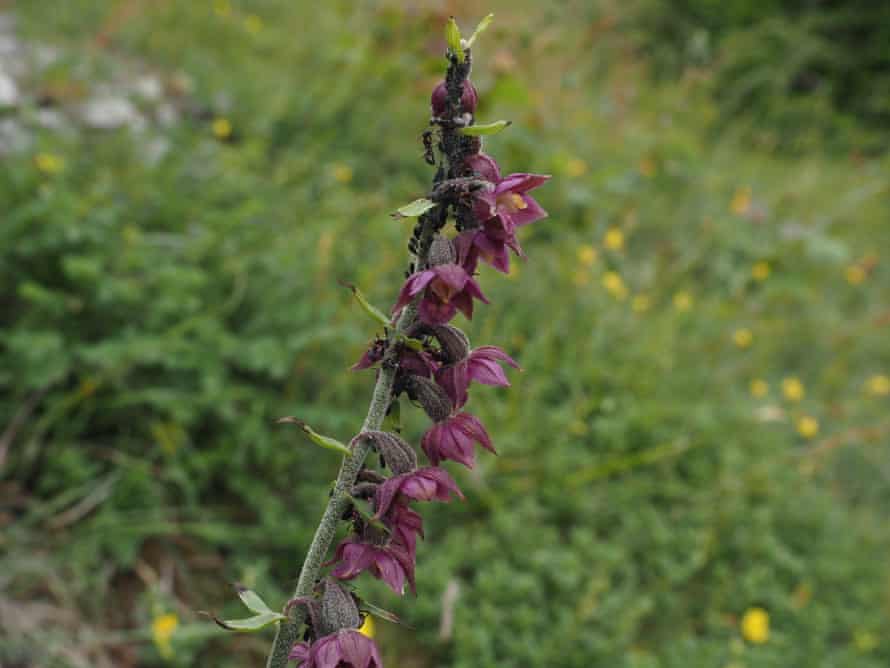Country diary: the curious coexistence of ants and aphids
Cressbrook Dale, Derbyshire: This reserve is a paradise, and my eye is drawn to a remarkable relationship amid the roses

The slopes to this national nature reserve in high summer are an exquisite blend of colour and variety: acacia-like hawthorn bushes, blackthorns (like whitebeam, only in certain spots) but also agrimony, creeping cinquefoil, salad burnets with their infinite fretwork of paired leaves, and lady’s mantle and wild strawberries and burnet rose and soft-scented dog roses.
An infinity of form they may be in combination, but the plants are united in being lovers of limestone and members of the one family: Rosaceae. This primal place is, therefore, the first, and, I would argue, the most beautiful rose garden in these islands.
As I lie down to let all my senses take it in, I see something equally remarkable. It’s a colony of aphids attended by Formica ants, as the former feed on sap. Ants then stroke the bodies of the other insects until they release a liquid waste full of carbohydrates, protein and minerals.
Ants have been farming and milking invertebrate livestock like this for 50m years. Some species live entirely off their bug herds and drive them through the vegetation like nomadic herdswomen (ant workers are always a sisterhood). By contrast, yellow meadow ants in Britain carry on the operation in total darkness, doing it all by touch and chemical signal and feeding their stock on subterranean roots.
Some aphids are so coevolved to live in these ranching partnerships that they cannot survive without ants. They would be like those swinging milk bags of bones – the Holstein crosses – but without the welly-booted farmer. The queens of some agricultural ant species, when embarking on their nuptial flights, carry a few of the herd in their jaws to begin the colony with a dowry of new cattle.
What I have omitted so far to add is that this ranching operation I am watching is atop a plant I have never seen before in my life – a dark-red helleborine, a Nationally Scarce species of gorgeous hue. So, this is a farm within a vast rose garden on top of the most special flowers I’ve ever seen. This environmental whole is probably as close as I shall get to terrestrial paradise.